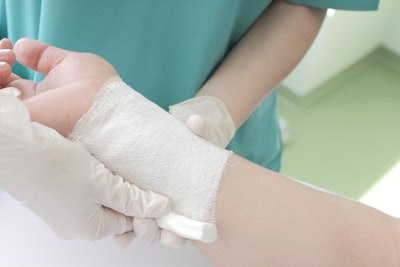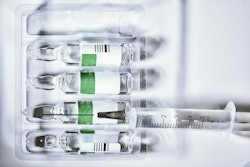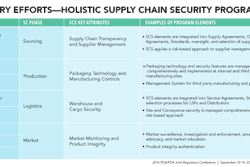
Greater access to primary healthcare services owing to a growing disposable income per capita, joint efforts by supply chain executives to increase efficiency (higher reimbursement for hospital supplies facilitated through cost sharing between key stakeholders across the value chain), and rising governmental support in the form of deeper collaborative research in developed economies is creating high potential growth opportunities for players operating in the global traditional wound management market.
Rising popularity of non-woven gauzes in wound care and wound management activities owing to its virtually non-adherent and faster wicking ability; increasing focus by payers on patient care; growing consumption of wound care products due to a rise in the occurrence of diabetic ulcers and other chronic diseases; rapidly expanding outpatient wound care practices in ambulatory care centers; and the utilization of traditional wound management products with innovative solutions are some of the key trends likely to shape the global traditional wound management market.
However, the decreasing popularity of traditional wound management products due to adoption of alternative therapies such as advanced wound care, negative pressure wound therapy, and active wound management is likely to slow down the growth of the global traditional wound management market in the near term.
A high demand for low-frequency dressing change in acute care settings, high economic costs associated with wound care, and inconsistent research findings regarding the efficacy of traditional wound management products are some of the other major restraints likely to hamper market growth over the forecast period.
These are among the findings of a new report, "Traditional Wound Management Market: Global Industry Analysis and Opportunity Assessment 2016-2026," from Future Market Insights.
The market research report studies the global traditional wound management market and provides in-depth analysis of the key factors and trends impacting the market over the forecasted 10-year period. It forecasts the global traditional wound management market is expected to be valued at US$5,746.0 million by the end of 2026, expanding at a CAGR of 3.1% during the forecast period.
Overall, the report notes wound care is a billion dollar market accounting for a massive proportion of healthcare expenses globally. Traditional wound management products are intended for managing non-severe as well as acute wounds. There is a steady demand for traditional wound managing first aid products globally in home care settings as well as in hospitals.
Products such as gauze bandages and adhesive bandages enjoy sustainable demand for small cuts, bruises, etc. and are widely in use. The worldwide market for traditional wound management is expected to witness a moderate growth rate in terms of value owing to a rising geriatric population and increasing cases of burns and trauma across the globe.
Market projections based on segmentationinclude product type, including bandages, gauzes, gauze sponges and sponges: The gauzes segment is estimated to account for 39.3% revenue share of the global traditional wound management market in 2016. The bandages segment is estimated to account for 16.7% revenue share this year. Cotton gauzes find extensive usage in medical dressings, bandages, and production of wound adhesions due to their non-adherent nature. The gauzes segment is expected to expand
at the highest CAGR of 3.3% in terms of value over the forecast period owing to an increasing usage of non-woven gauzes due to the high absorbent nature of non-woven material.
By application (such as skin and diabetic ulcers, burns, surgeries, trauma, skin cuts, primary dressings, etc. Here, the skin and diabetic ulcers segment is estimated to account for 16.7% revenue share in 2016 and is expected to expand at a CAGR of 2.8% in terms of value over the forecast period. The burns segment is anticipated to be valued at US$353.6 million by 2026, expanding at a CAGR of 2.4% over the forecast period. The surgeries segment is likely to witness increased growth over the forecast period owing to an increasing number of surgical procedures carried out across the globe—a direct offshoot of the rising global expenditure on healthcare facilities and treatment options. The surgeries segment is expected to be the most lucrative segment in the global traditional wound management market with an attractiveness index of 2.9.
By end-user (hospitals, clinics, diagnostic centers, homecare settings, ambulatory surgical centers, the Hospitals end user segment is expected to be the most lucrative in the global traditional wound management market and is estimated to account for 48.3% revenue share by the end of 2016. The ambulatory surgical centers segment is expected to expand at a CAGR of 3.0% in terms of value over the forecast period. The clinics segment
is anticipated to be valued at US$674.7 million by 2026, expanding at a CAGR of 2.7% over the forecast period.
Sales of traditional wound management products have remained robust in the U.S., making North America the most lucrative market globally. In terms of value, North America is expected to be the dominant regional market in 2016 and is estimated to account for 48.3% revenue share by the end of 2016, expanding at a CAGR of 3.4% over the forecast period.
Traditional wound management sales are also growing steadily in the Japan, MEA, and APEJ markets. Revenues in APEJ are anticipated to increase at a CAGR of 3.6% while the MEA market is anticipated to increase at a CAGR of 3.2% and the Japan market is anticipated to increase at a CAGR of 3% over the forecast period.





















